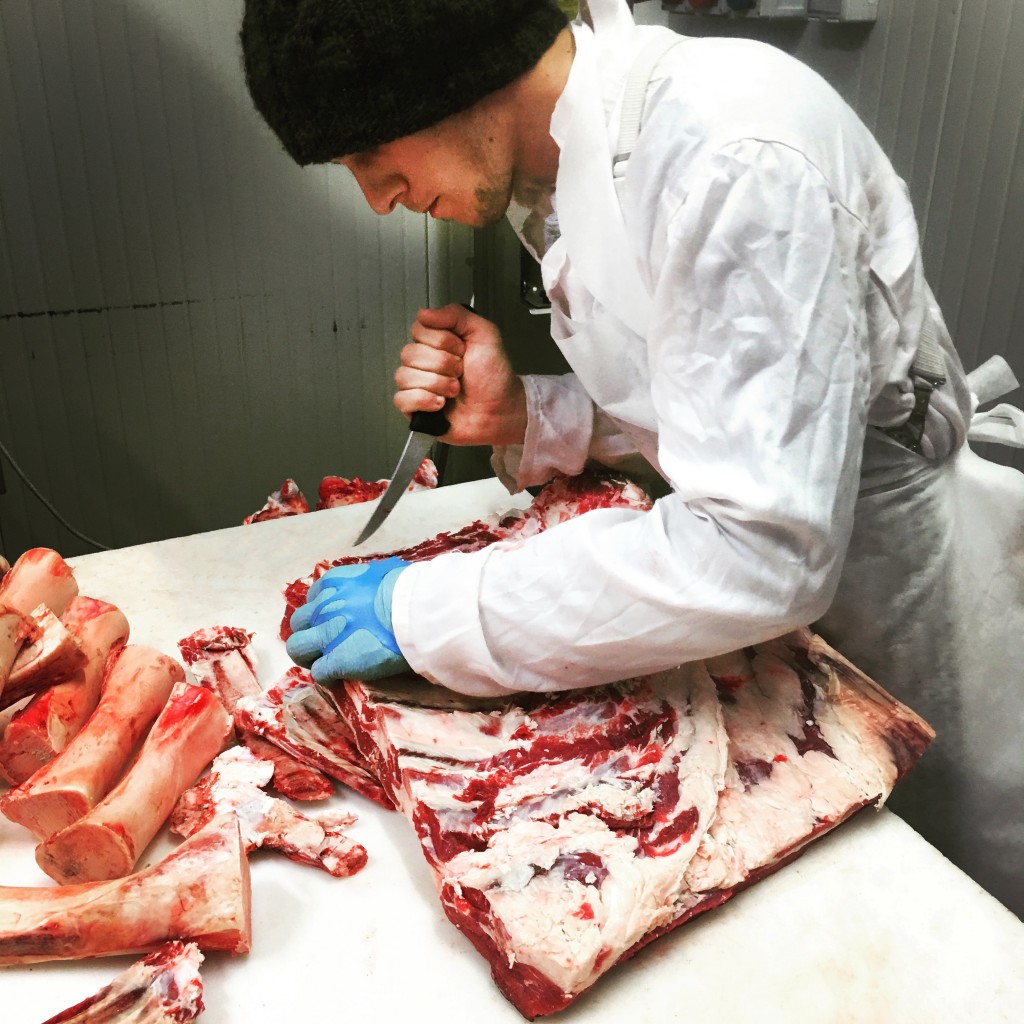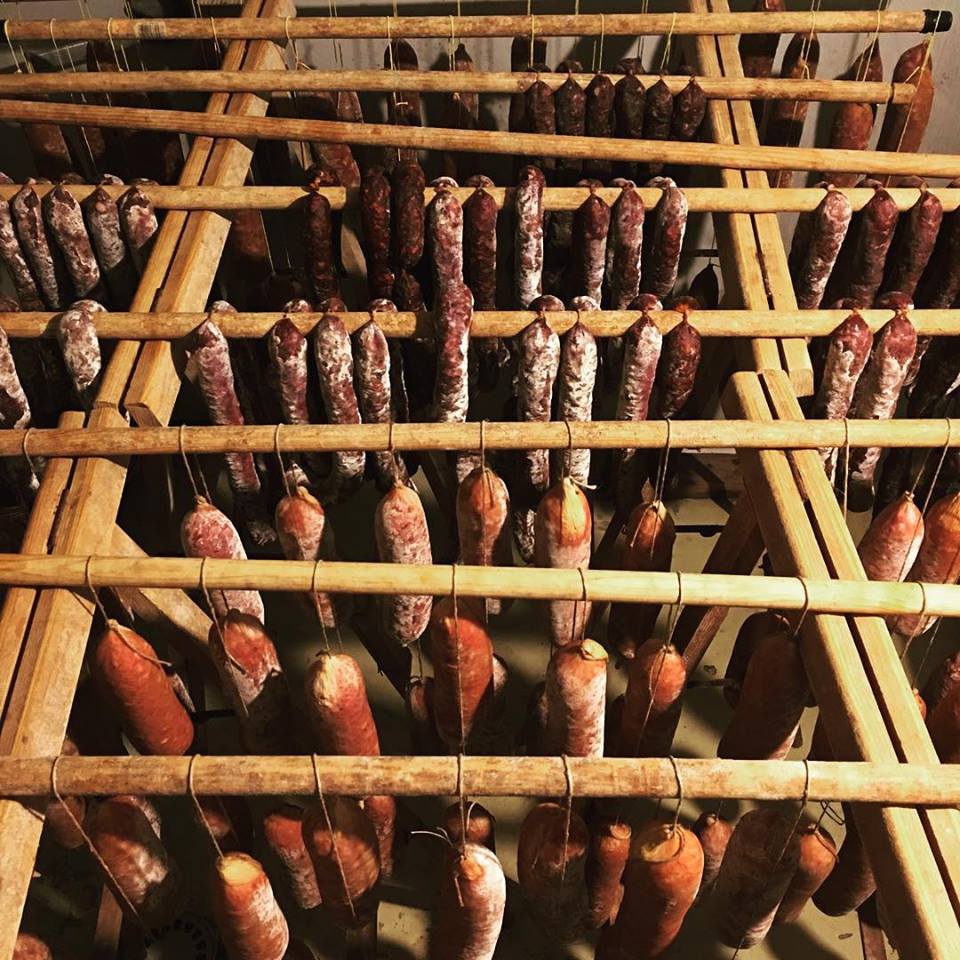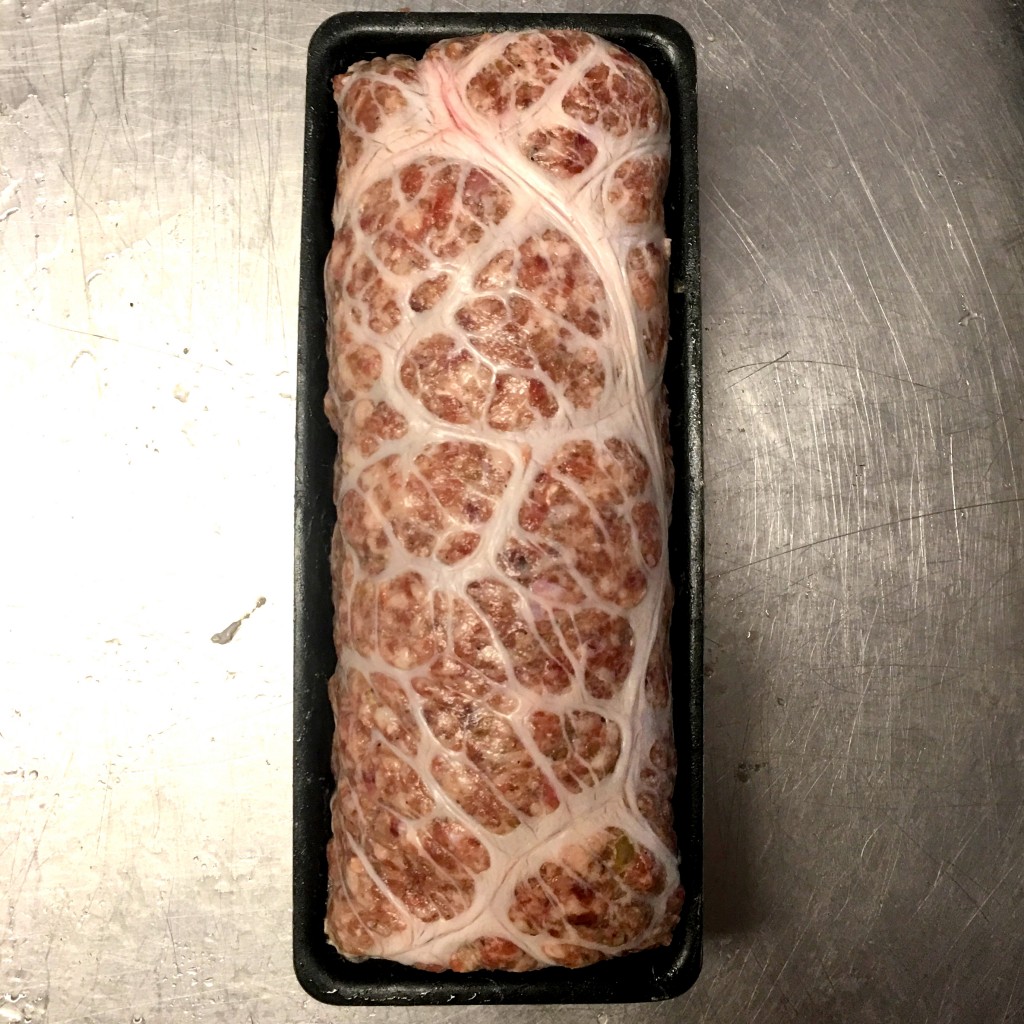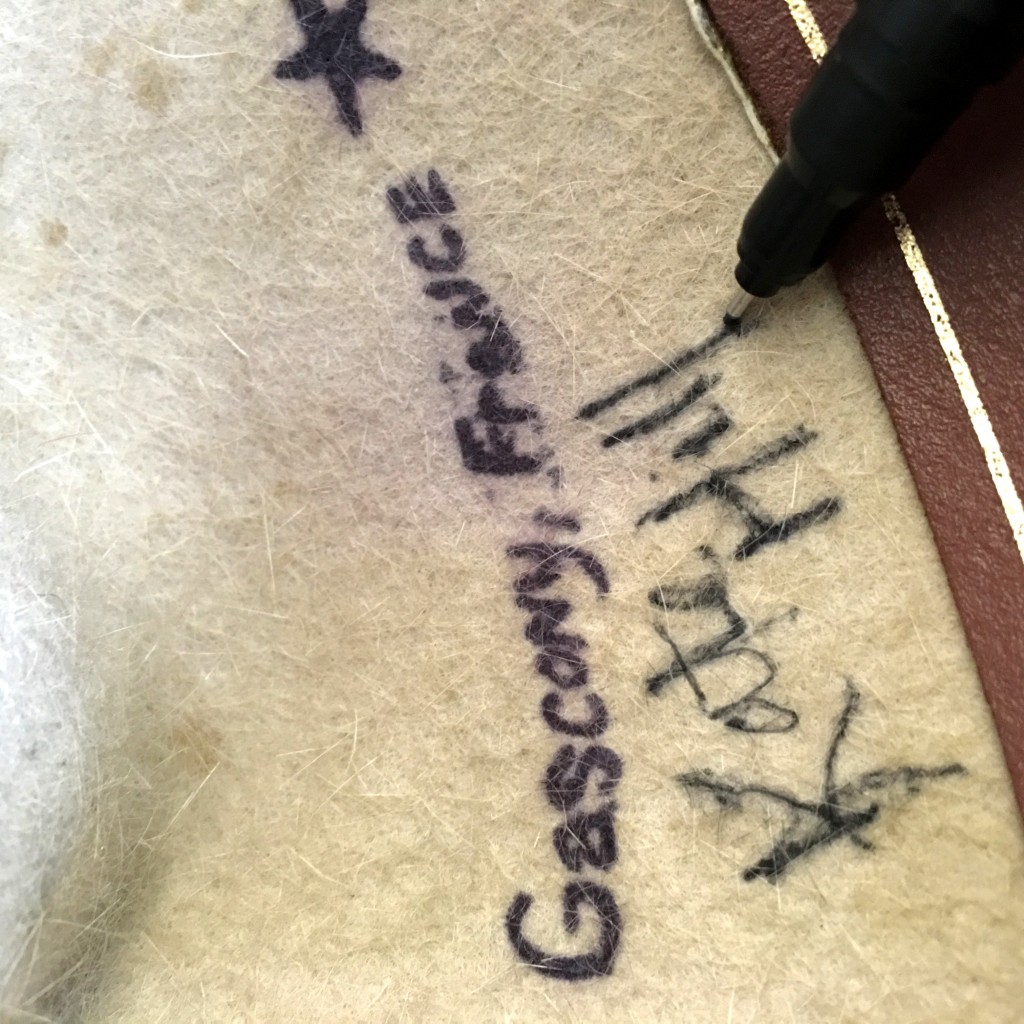I find it funny how many Italians can’t speak English, but if you throw on some bass-driving AC/DC songs, they can sing every word to perfection. So my first two days at the Celle (Dario's meat lab) we rocked to Dirty Deeds Done Dirt Cheap and Highway to Hell instead of That’s Amore. Truth be, I don’t care what’s on the playlist – whether it be Dino or Angus Young. I am in Panzano, Italy, home of Dario Cecchini, one of the most famous butchers in the world and all I want to do is suck the marrow from the bone. I want to learn everything. I know it sounds crazy, but I do. It’s all part of this culinary adventure I’m on – to travel the world, stage with the best butchers and learn all I can from them.
In New York, I worked with great instructors and we processed a lot of lamb – something you don’t really find back home in Texas. Then in the French countryside, I learned traditional French charcuterie and came away with new found knowledge of pate de tete, or headcheese, blood sausage, and Noir de Jambon. Now in Italy, I am learning the ways of the master. I am learning Dario Cecchini's method of butchery.
So on my second day at Celle, I was finally given the opportunity to pull out my knives and get to work. We suited up to You Shook Me All Night Long and then Jadava slid me a shank from across the table and told me to debone it. Back in New York, shank meat was simply removed from the bone and set aside to grind into hamburger. There really wasn’t a specific method to deboning shanks – just get as much meat off the bone as possible. And so I did. I split the two main muscles off the shank like I had done so many times before. And then,
Que Catzo?!
I heard Jadava boom from across the table. He hurried around the butcher block towards me, apologizing for not being more specific.
No, no! Maestro Dario makes steak out of shank muscles. See, like this. Capisci?
Si, si. Dario wanted everything taken off in one smooth piece. Jadava explained that when he first started, he cut shanks for four months before Dario ever let him touch another cut of meat. He said if Dario wasn’t happy with your work, you were gone. It was Dario’s way or the highway. He deboned another shank to demonstrate and then I got back to work. This time, with much more precision and attention to detail. Now I was cutting a steak – not making hamburger.
All that day I was the ‘shank man’. Every shank that came through the processing room was mine. I was ecstatic to be back cutting meat and silently smiled to myself when next on the playlist was, It’s a Long Way to the Top.
Yes, indeed it is.























